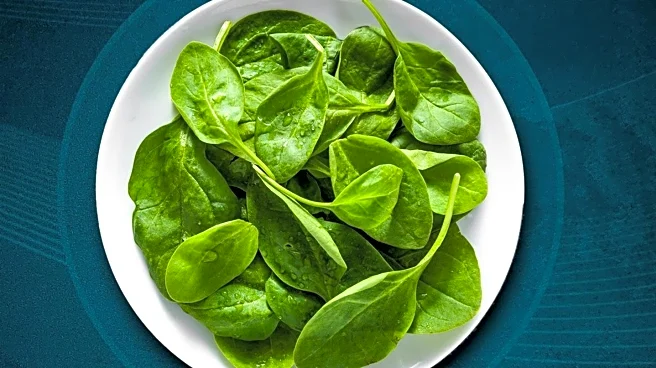What's Happening?
Registered dietitians have highlighted the importance of banana ripeness in determining its nutritional benefits. As bananas ripen, their sugar, starch, and vitamin content change, impacting health outcomes.
Underripe bananas, which are green and firm, contain high resistant starch and low sugar, beneficial for gut health and blood sugar stability. Barely ripe bananas, mostly yellow with some green, offer similar benefits with slightly less resistant starch. Ripe bananas, fully yellow and soft, have increased sugar and antioxidant content, making them ideal for quick energy. Very ripe bananas, with brown spots, are high in sugar and suitable for those needing fast energy. Overripe bananas, brown or black, are best for baking and smoothies due to their high sugar and antioxidant levels.
Why It's Important?
Understanding the ripeness of bananas can help individuals tailor their consumption to meet specific health needs. For those managing blood sugar levels, underripe or barely ripe bananas may be preferable due to their lower sugar content. Athletes and individuals seeking quick energy might benefit from ripe or very ripe bananas. This knowledge allows consumers to make informed choices based on their dietary goals, whether it's improving gut health, managing diabetes, or enhancing workout performance. The insights provided by dietitians can guide healthier eating habits and optimize nutritional intake.
What's Next?
Consumers may start paying closer attention to the ripeness of bananas when shopping, potentially influencing purchasing decisions and dietary habits. Dietitians and nutritionists might further explore the implications of fruit ripeness on health, leading to more personalized dietary recommendations. Grocery stores could consider offering more detailed information on fruit ripeness to assist customers in making informed choices. As awareness grows, there may be increased demand for educational resources on the nutritional impact of fruit ripeness.
Beyond the Headlines
The discussion on banana ripeness underscores a broader trend towards personalized nutrition, where individuals tailor their diets based on specific health needs and goals. This approach reflects a shift from generalized dietary advice to more customized strategies that consider individual differences in metabolism, health conditions, and lifestyle. The focus on fruit ripeness also highlights the importance of understanding food composition and its effects on health, encouraging consumers to be more mindful of their food choices.











